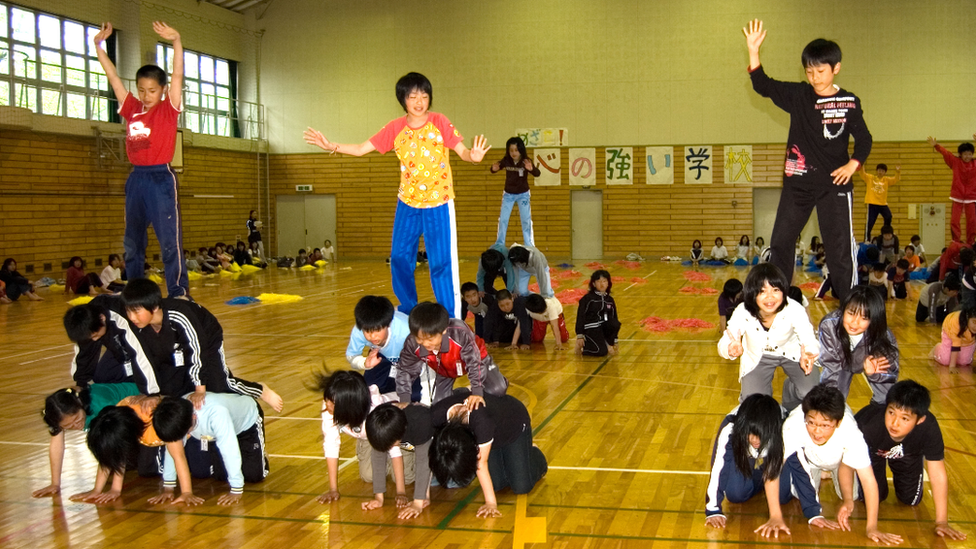New rules for human pyramids in Japanese schools
- Published

There are thousands of insurance claims each year over human pyramid-related injuries
Authorities in Japan are drawing up new guidelines for schools in an attempt to cut the number of accidents involving human pyramids.
The new regulations are intended to prevent serious injuries - and the subsequent insurance payouts - resulting from what's known as kumitaiso, the building of human pyramids in gymnastic displays, the Kyodo news agency reports, external. Education Minister Hiroshi Hase told reporters that new rules on the activity, which is a popular feature of school sports days, would be in place by the end of March. Mr Hase, a former professional wrestler, external, said: "It involves the lives of children, and some of the casualties reported have led to serious injuries."
Kumitaiso involves students kneeling on each other's backs, with the person at the top standing, and formations can be several storeys high. Even junior members of the Japanese royal family have been known to take part in the practice, with 11-year-old Princess Aiko photographed on the bottom row of a pyramid at a school gymnastics display in 2013, external.
According to the Japan Sports Council, insurance payments for injuries relating to human pyramids have been made in more than 8,000 cases per year since 2011. One case in Osaka prefecture in September 2015 left a student with broken bones after a ten-storey pyramid collapsed. That incident prompted the local board of education to limit human pyramids to five tiers and standing human towers to three.
Next story: Health and safety catches up with German public fridges
Use #NewsfromElsewhere to stay up-to-date with our reports via Twitter, external.